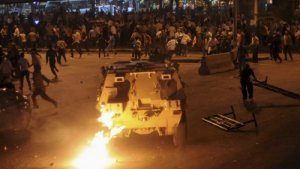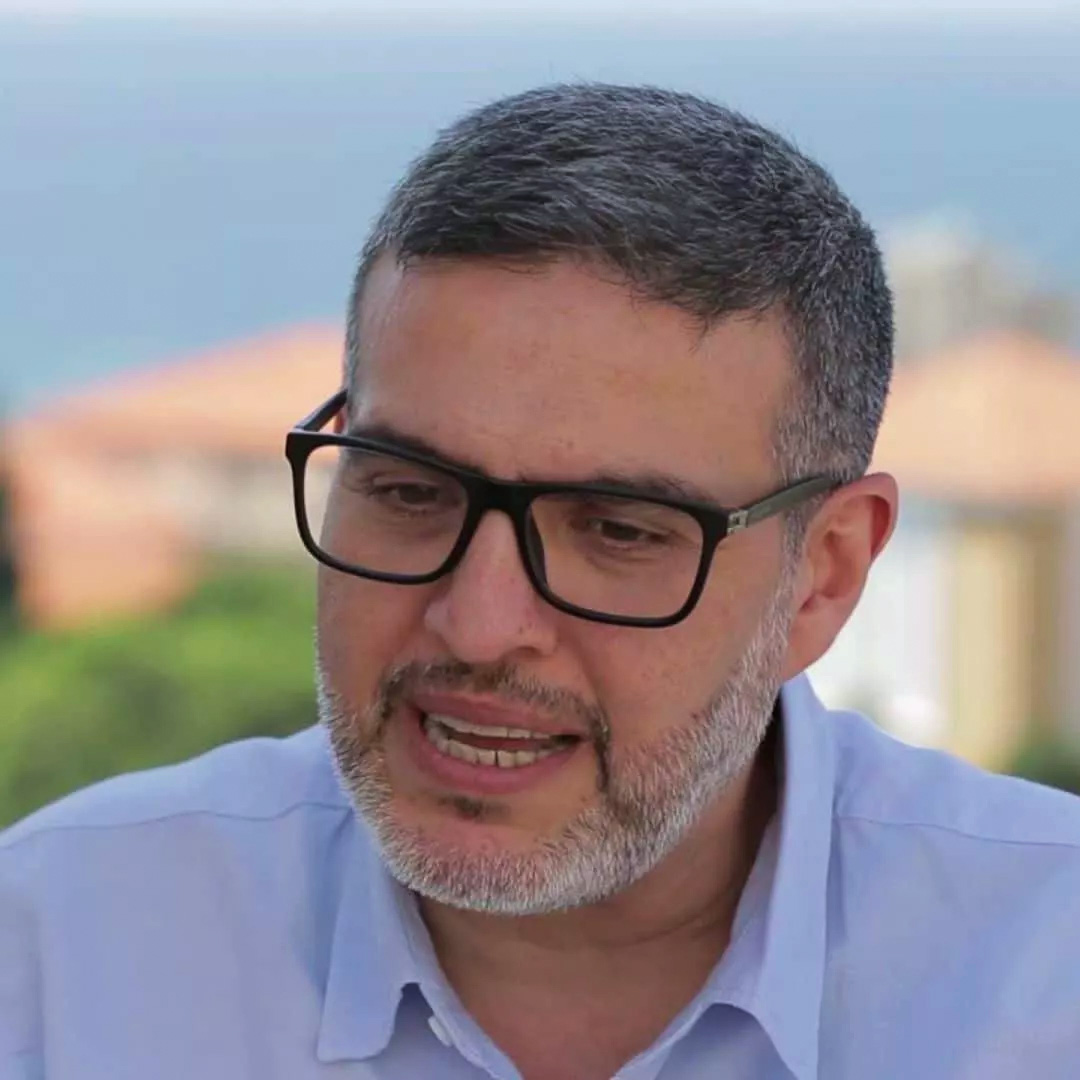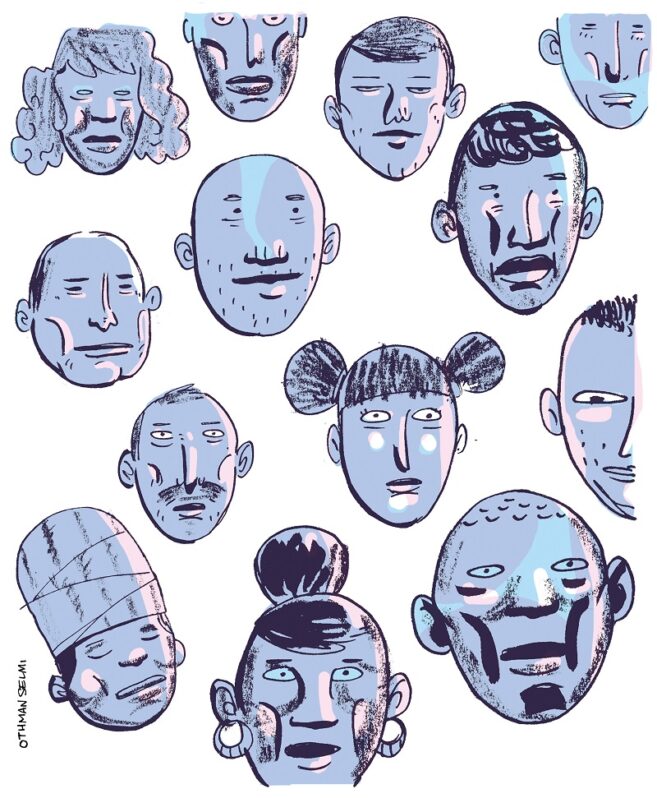Women, Minorities and Marginalized Groups in Egypt (2011-2013) (I): SCAF Rule

Author’s Introductory Note
In any society experiencing political changes and tension, women, religious and ethnic minorities, as well as marginalized groups are usually those most affected. The main purpose of this study is to determine whether the social upheaval that took place in Egypt between 2011 and 2013 resulted in legal guarantees for the rights and freedoms of individuals, especially among the abovementioned categories regardless of the latter’s political clout.
The study focuses on the following groups: women, minorities (both religious, such as Copts and Shiites, and ethnic, such as Nubians in Upper Egypt and bedouins in Sinai), and marginalized groups.
Minorities. There are contradictory statistics about the number and proportion of Copts among the Egyptian population.[1] The government’s Central Agency for Public Mobilization and Statistics (CAPMAS) has not published any such data. No official statistics exist regarding the number of Shiites. As for Nubians, they are native inhabitants of the region south of the Aswan governorate (in Southern Egypt), stretching for about three hundred kilometers to the Sudanese border.[2] They were resettled in villages in the Aswan governorate when the Aswan High Dam was built in the 1960s under President Gamal Abdel Nasser. The last category is that of native inhabitants of the Sinai Peninsula in Eastern Egypt, which borders occupied Palestine.
Marginalized Groups. For the purpose of this study, the groups examined are Syrian refugees, female domestic workers, people with disabilities, and those injured during the revolution starting in January 25 and up until the ouster of President Mohammed Morsi.
Part One: Supreme Council of the Armed Forces (SCAF) Rule: January 2011 to January 2012
A. Participation in the Revolution
From day one of the revolution, Egyptian women were present in Tahrir Square and in public squares across the country. Their positive participation was in fact one of the revolution’s most prominent features.
The Copts refrained from taking part in politics under former Presidents Anwar Sadat and Hosni Mubarak. The Coptic Church was the designated channel of political expression.[3] Demonstrations held to protest the attacks against the Omraniya and Saints churches in early 2011 were seen as a watershed in which this tradition was broken. Copts took part in the revolution despite the fact that the then head of the Coptic Church, Pope Shenouda III, urged them not to demonstrate. This represented both a departure from their history of political participation and an emergence from the confines of their church.
B. Activism (al-Harak)
The Revolution: The Right Time to Take Action
After Mubarak stepped down, the feeling prevailed in Egyptian society that this was the time to build a state based on the principles of justice and equality. Thus, many groups considered it the most appropriate time to take action and engage in social and political movements.
SCAF confronted such movements with an attitude of indifference. It failed to provide radical solutions, and in many cases, it simply did not intervene. When it did, it only took band aid measures to deal with the crisis.
Even after Mubarak stepped down, women insisted on continuing to fight for their rights. On March 8, 2011, which coincided with International Women’s Day, feminist groups organized a march to celebrate the occasion in Tahrir Square. They demanded full constitutional equality with men and deemed women’s participation in drafting the constitution as imperative.[4]
As for the Copts, they organized a sit-in in front of the Ministry of Justice on July 7, 2011, to demand a civil marriage law that would resolve the problem precipitated by the refusal of the Coptic Church to issue second marriage licenses to divorcees.[5]
The Copts considered this an appropriate time to emerge from under the umbrella of Church authority and positively participate in political life. Like most other Egyptians, they probably broke away from the grip of fear. This led to the emergence of over 30 different Coptic political movements.[6]
The Nubians, for their part, took advantage of the revolutionary movement and organized numerous sit-ins, such as the ones on March 24[7] and April 7, 2011. They also held a major protest on September 4, 2011 in front of the Aswan Governorate building. They presented their demands to several government bodies. Chief among those demands is their resettlement in the lands they were displaced from on the banks of Lake Nasser, in addition to criminalizing discrimination against them and preserving their culture, traditions and history.
As for female domestic workers, they are not included in the 2003 labor law, and are therefore deprived of all the rights granted by the latter. Based on the calls of human rights organizations, a number of Egyptian lawyers have begun training some of those workers and raising awareness among them, stressing the importance of setting up their own labor union.[8] This training, taking place in a revolutionary climate, contributed to the establishment of such a union in August 2012. Dubbed the “syndicate of monthly-paid workers”, it is considered the first labor union of its kind in Egypt and the Arab World.
SCAF Violations Fuel Mass Social and Legal Movements
Virginity Tests
On March 9, 2011, a protest in Tahrir Square was forcibly dispersed.[9] The Military Police arrested many of the girls protesting, held them at a military prison and forced them to submit to virginity tests.[10] Samira Ibrahim –one of the young women subjected to these tests– filed a lawsuit before a military court against an army physician, accusing him of having forced the protesters to submit to virginity tests. She also filed another lawsuit before the Administrative Judicial Court to force the Military Council to stop performing virginity tests.
It is worth noting that on March 11, 2012, the military court declared the army physician innocent, thereby contradicting the ruling issued by the Administrative Judicial Court on December 27, 2011. The latter barred the Military Council from performing any “medical tests to determine the virginity of young women”, implicitly admitting that such tests had been performed.
Also noteworthy is the fact that the Egyptian Initiative for Personal Rights (EIPR) and the International Centre for the Legal Protection of Human Rights (INTERIGHTS) filed a lawsuit before the African Commission on Human and Peoples’ Rights (ACHPR), demanding a new investigation of the incident, as well as a retrial.[11]
Violence Against Women as an Attempt to Quell Demonstrations
For a variety of reasons, sexual harassment is a widespread phenomenon in Egypt that predates the revolution, especially at gatherings and during holidays. However, during the period under study, this phenomenon shifted from one merely rooted in social inhibitions to one characterized by violent incidents. This shift became so evident and frequent that civil society and human rights organizations enlisted it as one of the means employed by those in power to suppress demonstrations and prevent women from participating in politics.
To confront this phenomenon, on March 22, 2011 SCAF issued a legislative decree to raise the penalty for rape to include capital punishment or life imprisonment. The decree also included increased penalties for acts characterized as sexual harassment, ranging between six months and two years in prison.[12] Nevertheless, incidents of sexual harassment continued to take place, especially in Tahrir Square. Youth initiatives also began to appear, in efforts to address this phenomenon and to try to combat it.
Perhaps the most prominent feature at this stage is the use of violence on the part of the military police themselves. Indeed, the virginity tests mentioned above may well be labeled as crimes against decency (hatk al-’ird). Female protesters were also dealt with violently during the November 2011 protest. Some described instances of being dragged across the ground, sexually harassed and beaten at the hands of the military police while the protest was being dispersed.[13]
The most famous of these incidents made headlines in both the local and international press. A picture captured a girl being dragged across the ground and stripped down by military police forces in December 2011. It was followed by protests on December 20, 2011, whereby thousands of women took part to denounce the use of violence against women. SCAF also issued a statement expressing its disapproval of such violations, claiming it had taken legal measures against those responsible.[14]
The Authorities Refraining from Protecting Churches: The Main Reason for Activism by Copts[15]
When churches were attacked, authorities did not move quickly enough to protect them, especially in the governorates of Upper Egypt. For example, when the Church of the Holy Family and Saint George in the town of Rafah was attacked by armed and masked men, security officials refused to file a report about the attack. The priest had to turn to the Office of Military Intelligence in Northern Sinai, which in turn only took action ten days later. In some cases, attacks took place while military police forces were present at the scene. Thus, in March 2011, the Church of the Two Martyrs in the village of Sool was demolished before their very eyes without members of the military police intervening to protect it.
This negative approach led to the eruption of massive protests in Cairo in front of the Maspero radio and television building on March 5, 2011. This was the first major mass action by Copts after the revolution. It resulted in the birth of the Maspero Youth Union (MYU), a Coptic movement that would later become politically active.[16] Movements and protests by Copts in front of the Maspero building have since been numerous, in proportion to the unprecedented amount of violations they have been subjected to during this period.
The Maspero protest of October 9, 2011, also known as the “Maspero massacre”, is considered a prime example of the force and violence committed by SCAF against Copts. After the attack against the Church of Saint George in Aswan, thousands of Copts organized a march, but the army attacked the protesters directly, going as far as armored army vehicles running over a large number of protestors. The army also used live ammunition and tear gas canisters to disperse the protest.
It should be mentioned that, to this day, SCAF has not admitted its responsibility for the events, and that only three soldiers have been court-martialed on charges of manslaughter.[17] The verdicts issued were two years of imprisonment for two of the soldiers, and three years for the third.
C. Political, Civil, Economic and Social Rights
After the outbreak of the revolution, the 1971 Constitution was suspended, and it was agreed that certain amendments should be made to it. A committee was formed to draft these amendments. Not a single woman was among its members.[18] The Constitutional Review Committee included one Copt, and a counselor at the Supreme Constitutional Court (SCC). The Coptic public opinion did not consider him to represent their community, especially as the committee also included a former Muslim Brotherhood MP from Alexandria. It is also likely that women were excluded from the committee in order to gain the support of the Islamist movements.
In March 2011, the Constitutional Declaration was issued, devoid of any mention of women’s rights or the rights of Copts or of other minorities and marginalized groups. It merely stated in Article 7 that all citizens were “equal in rights and general duties”, and in Article 12 it guaranteed “the freedom of creed, and the freedom to practice religious rites”.
This kind of marginalization continued during the string of governor appointments and transfers that followed the revolution. Women and Copts were excluded from being appointed as governors, under the pretext that the security situation would not allow it.
On the other hand, amendments to the legislative election law governing the People’s Assembly and Shura Council elections, stated that every electoral list should include at least one woman. The amendment did not require that the women candidate’s name be included in the top third of the list, something that certain women’s groups had called for.[19] The absence of womens’ names from the top of the lists contributed to the low number of women, nine, who were elected to the People’s Assembly (two others were appointed).[20]
As for the Copts, they were not assigned a quota of seats, and were represented in the People’s Assembly after the revolution by eleven MPs (six elected and five appointed).[21]
The Military Council did not select any MPs to represent the Nubians or people with disabilities among the ten it appointed to the People’s Assembly, and only appointed a single representative of the Sinai tribes.
During this period, those injured during the revolution began to protest. They called on the the state to pay for their treatment and place them on a payroll. In December 2011, the prime minister issued the decision to set up the National Council for the Care of Martyrs’ Families and the Injured of the Revolution (NCCFRMI). The new organ was entrusted with providing medical services and health care to the injured, in addition to providing them with job opportunities or helping them to set up small businesses.
As the government refrained from placing the families of martyrs and the injured on a payroll, a lawsuit was filed before the Administrative Judicial Court. The plaintiffs challenged the government’s decision and demanded that special pensions be issued. On January 11, 2012, the court issued its verdict requiring the government to issue special pensions.
Violations of the Freedom to Practice Religious Rites
Members of the Shiite community in Egypt have long suffered from persecution in Egyptian society, due to misconceptions about their beliefs, media incitement and political tensions in the Arab region.
In December 2011, during the Shiite religious commemoration, Ashura, members of the Shiite community headed to the al-Hussein mosque to commemorate their holy day. However, Egyptian police forces arrested seven of them and prevented them from performing any religious rites. The deputy of the Ministry of Endowments (awqaf) in charge of mosques also demanded that the staff prevent them from entering the mosque or performing their religious rites.
Thus, under the pretext of preserving public order and security, the state moved from protecting the freedom of creed and the freedom to practice religious rites to actively violating such rights.
Violations of the Freedom of Expression and the Right to Vote
The referendum of March 2011 recorded a high rate of participation across the social spectrum. The participation of people with disabilities, however, was hindered by numerous difficulties. Most polling stations were not equipped to receive them. Moreover, their ballot was not a secret one.[22]
In spite of this, the same mistakes were repeated in the 2011 People’s Assembly elections. Egyptian authorities failed to equip polling stations to receive people with disabilities and allow them to vote. This led to various difficulties arising during the voting process, a situation that may well be described as a clear violation of the right to vote.[23]
Such violations reflect the fact that the state lacks a clear strategy based on the principle of citizenship, aimed at integrating disenfranchised groups into Egyptian society. They also show that Egyptian authorities, as represented by SCAF and the government cabinet, engaged in acts meant to marginalize some segments of Egyptian society, or, more accurately, to keep them marginalized.
This article is an edited translation from Arabic.
_______________
[1] “Census of Copts Sparks Controversy in Egypt”, published on the Sky News Arabic website on September 26, 2012.
[2] See: Abdel Mageed Khalil’s, “Nubia: Man and History”, published by Madbouly Books, 2013.
[3] See: Peter Magdy’s, “Special Report: The Copts from the Church to the Street”, published in al-Tahrir newspaper on January 24, 2013.
[4] “The Situation of Egyptian Women after the January 25 Revolution: More Marginalization and Violations”, report published by the National Association for the Defense of Rights and Freedoms (NADRF), May 2012.
[5] al-Masry al-Youm, June 8, 2010.
[6] See: Ismail Gomaa’s, “The Copts on the Political Playing Field”, published on the al-Ahram website on June 21, 2013.
[7] Statement issued on September 4, 2011 by the committees that organized the protest.
[8] See: Mohamed al-Ansari’s, “Setting up the First Domestic Workers’ Union in Egypt: A Step Towards Eliminating Exceptions to the Labor Law” on June 30, 2013.
[9] Published on the website of the Front to Defend Egypt Protesters (FDEP) on March 9, 2011.
[10] “Egyptian Women After the Revolution: The Reality and the Challenges”, report published by the Ibn Khaldun Center for Development Studies, January 2013.
[11] Website of the Egyptian Initiative for Personal Rights (EIPR).
[12] Article 306 of the Egyptian Penal Code.
[13] Refer to the story of journalist and activist Mona Eltahawy, published in al-Masry al-Youm on June 8, 2010.
[14] Military Council statement No. 91, dated December 20, 2011.
[15] The information included in this section is based mainly on the report published by the Egyptian Initiative for Personal Rights (EIPR) in October 2012, entitled “The Copts Under Military Rule: The Facts of a Year and a Half of Crimes During the Transitional Period”.
[16] “The Copts and the Revolution: From Isolation to Dialogue, Clashes and Emigration”, published in the al-Youm al-Sabea newspaper on December 29, 2011.
[17] See note 15 above, idem.
[18] See note 4 above, idem.
[19] Decree issued by the Military Council on September 27, 2011 to amend the provisions of Law No. 38 and Law No. 120 regarding the People’s Assembly and the Shura Council.
[20] See note 10 above, idem.
[21] See: Said Shehata’s, “The Copts in Egypt’s People’s Assembly”, published on the BBC website on March 19, 2012.
[22] Statement issued by the Egyptian Coalition for Persons with Disabilities on March 20, 2011
[23] See: Menna Omar’s, “People with Disabilities in Egypt: The Right to Citizenship Subject to Referendum or Ahead of it?”.
Mapped through:
Articles, Egypt, Gender, Sexuality and Women Rights, Inequalities, Discrimination and Marginalisation
Related Articles



